Abstract
We report here an evaluation of a program for thalassemia-disease prevention, comprising education, population screening for heterozygotes, and reproductive counseling; the evaluation includes cost analysis. A preprogram survey in 1978 of 3,247 citizens in the high-risk communities (85% were high-school students) showed that 88% favored a program but that only 31% considered fetal diagnosis as an acceptable option. Screening in high school or before marriage was preferred by 56%. In a 25-month period (December 1979-December 1982), we screened 6,748 persons, including 5,117 senior high-school students, using MCV/HbA2 indices. The participation rate was 80% in the high-school group. The frequency for beta-thalassemia heterozygosity was 4.7% with 10-fold variation among ethnic groups at risk; the overall frequency for all variants found was 5.4%. We surveyed 60 carriers and 120 noncarriers after screening high-school students (response rate 77%): most carriers told parents (95%) and friends (67%) the test result; and 38% of the carriers' parents (vs. 18% of the noncarriers' parents) were also screened. Carriers would ascertain their spouses' genotype (91%) and approved uniformly (95%) the high-school screening experience and its goal. We performed 11 fetal diagnoses in a 25-month interval (greater than 75% participation in target population) either by fetoscopy and globin-chain analysis or by amniocentesis and genomic DNA analysis; two of three affected fetuses were aborted at parental request, there was one spontaneous abortion (after fetoscopy), and seven live births. The at-risk couples claimed pregnancy would not be contemplated without the fetal-diagnosis option. We analyzed economic costs of the program: cost per case prevented is approximately equal to $ 6,700, slightly less than cost-per-patient-treatment-year or about 4% of undiscounted treatment cost incurred in the first 25 years of life for an affected individual. These findings indicate: collective acceptance of the program, appropriate attitudes among carriers, general acceptance and efficacy of fetal diagnosis, and global cost-effectiveness.
Full text
PDF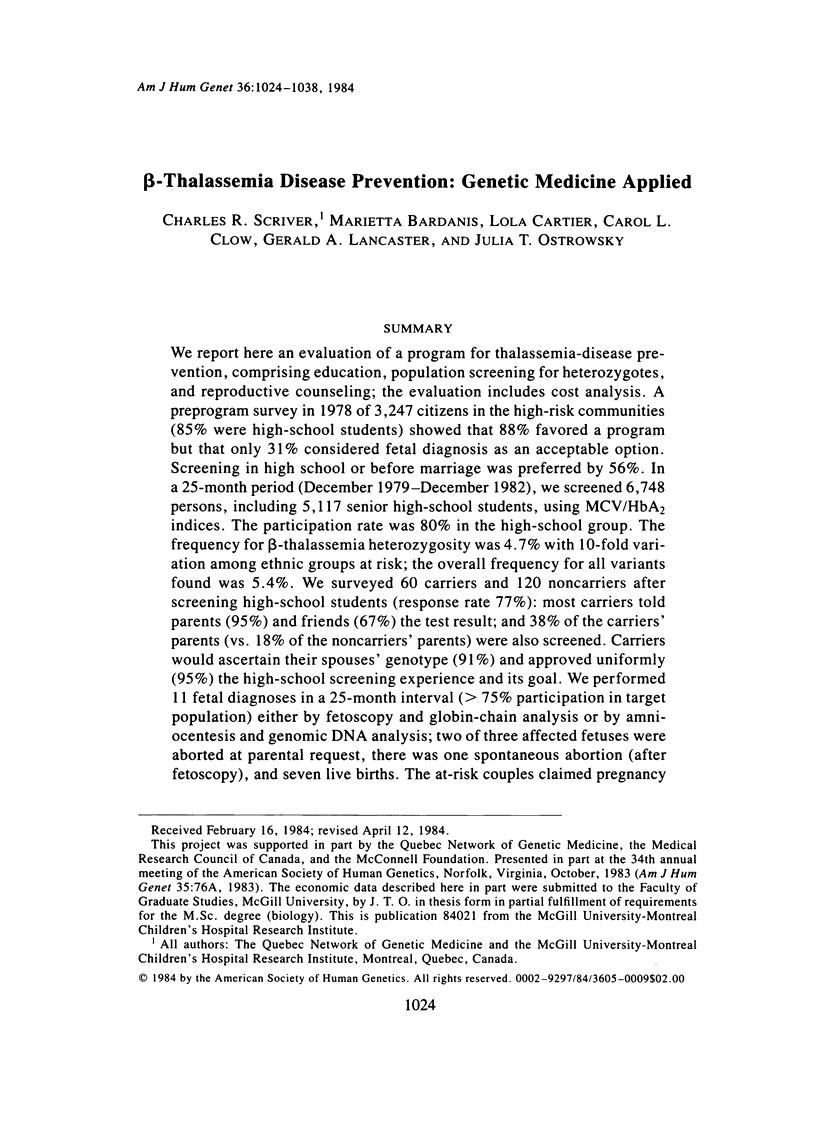
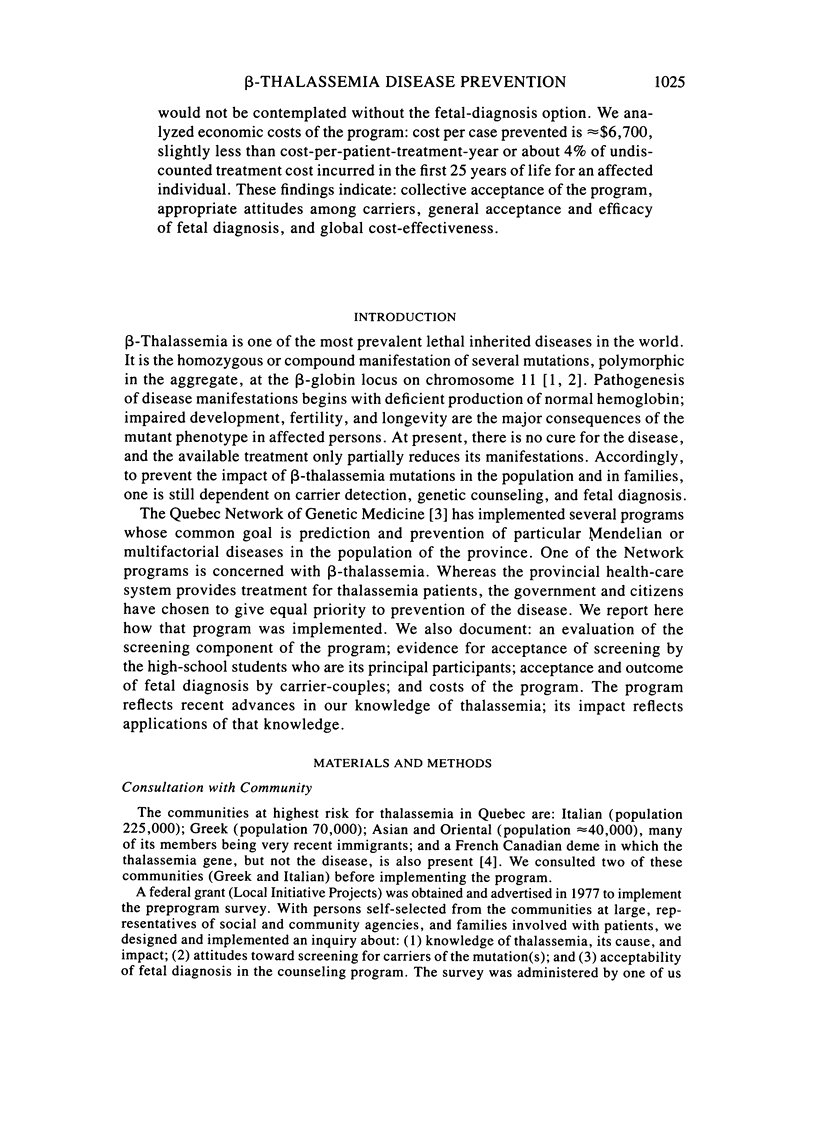
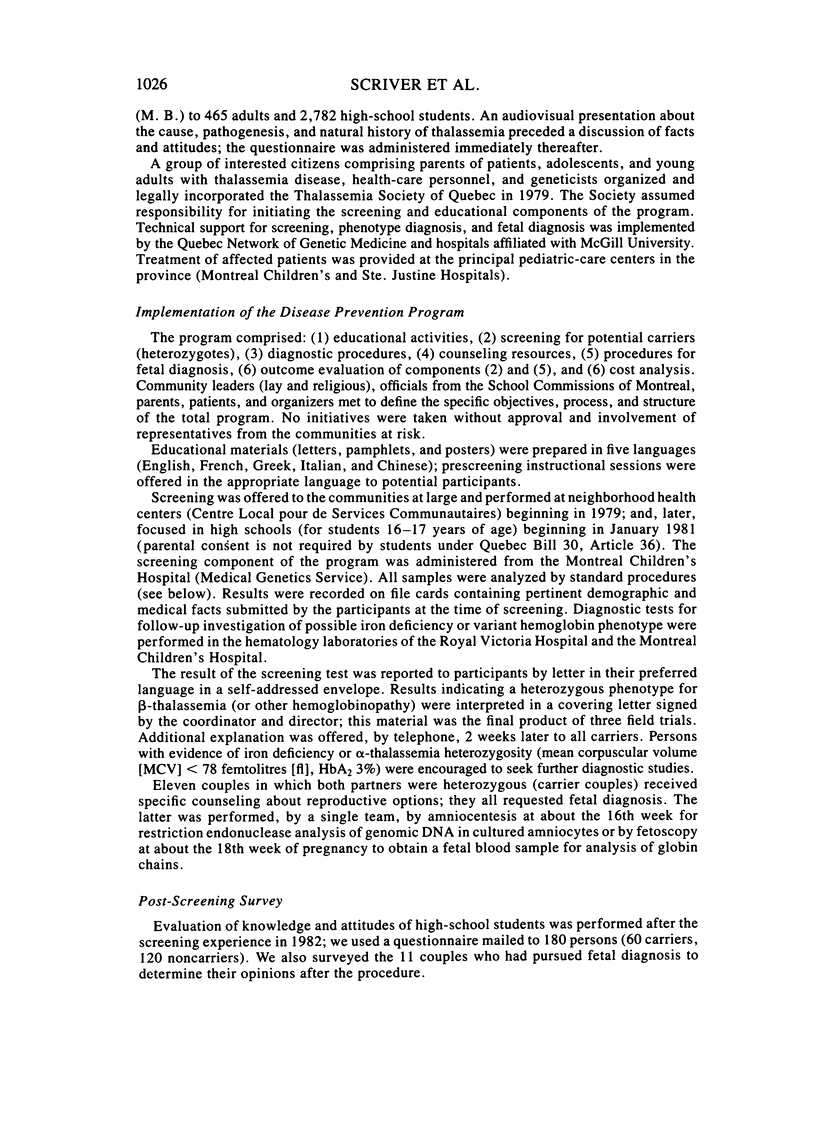
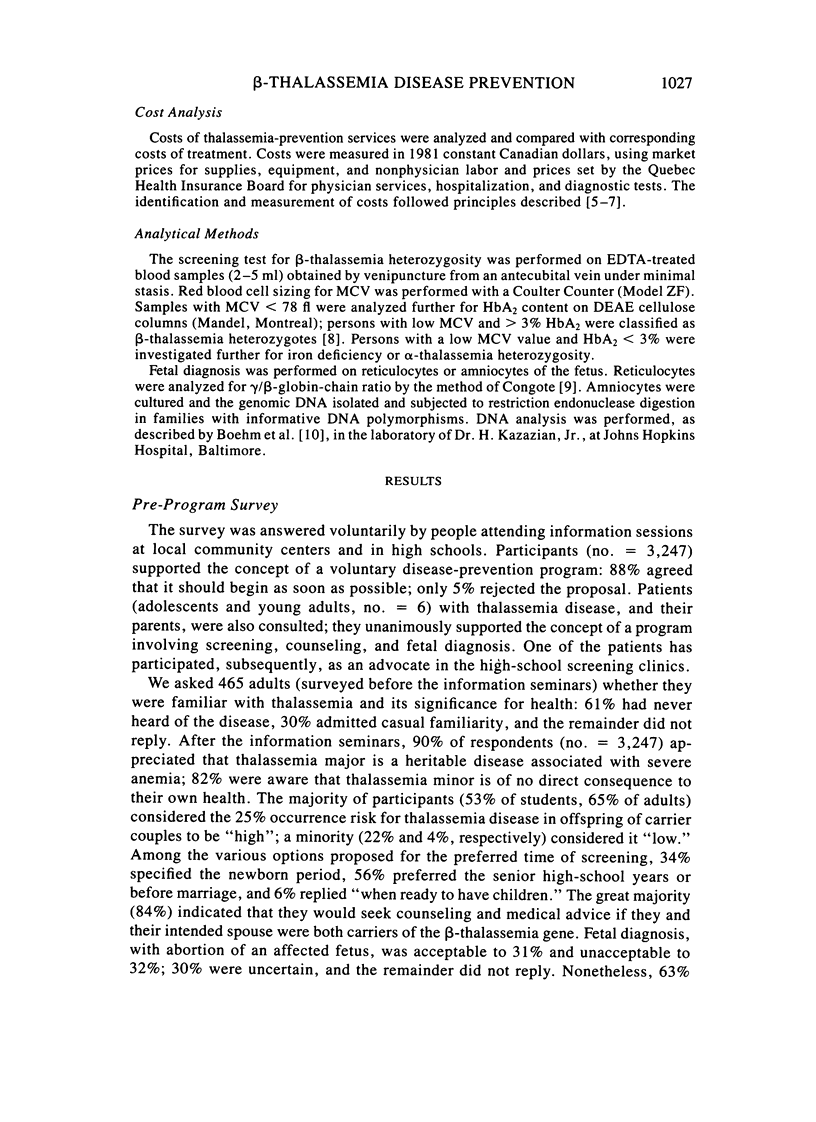
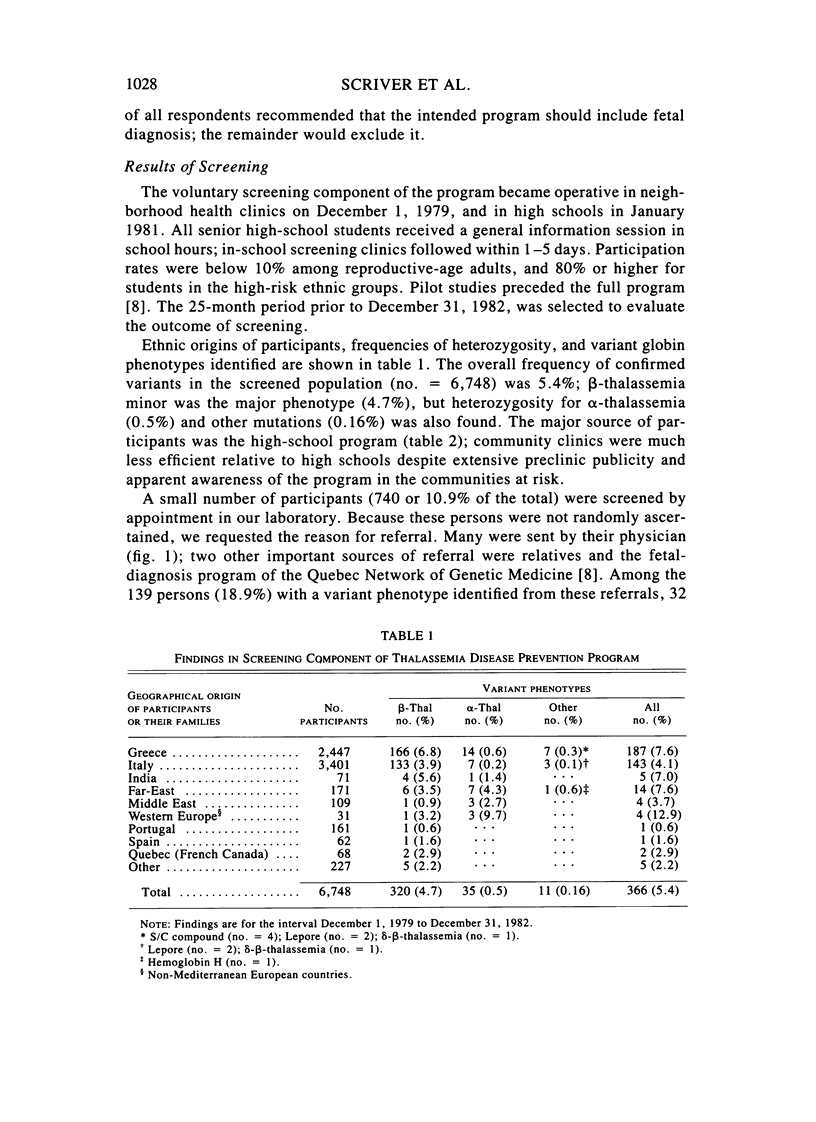
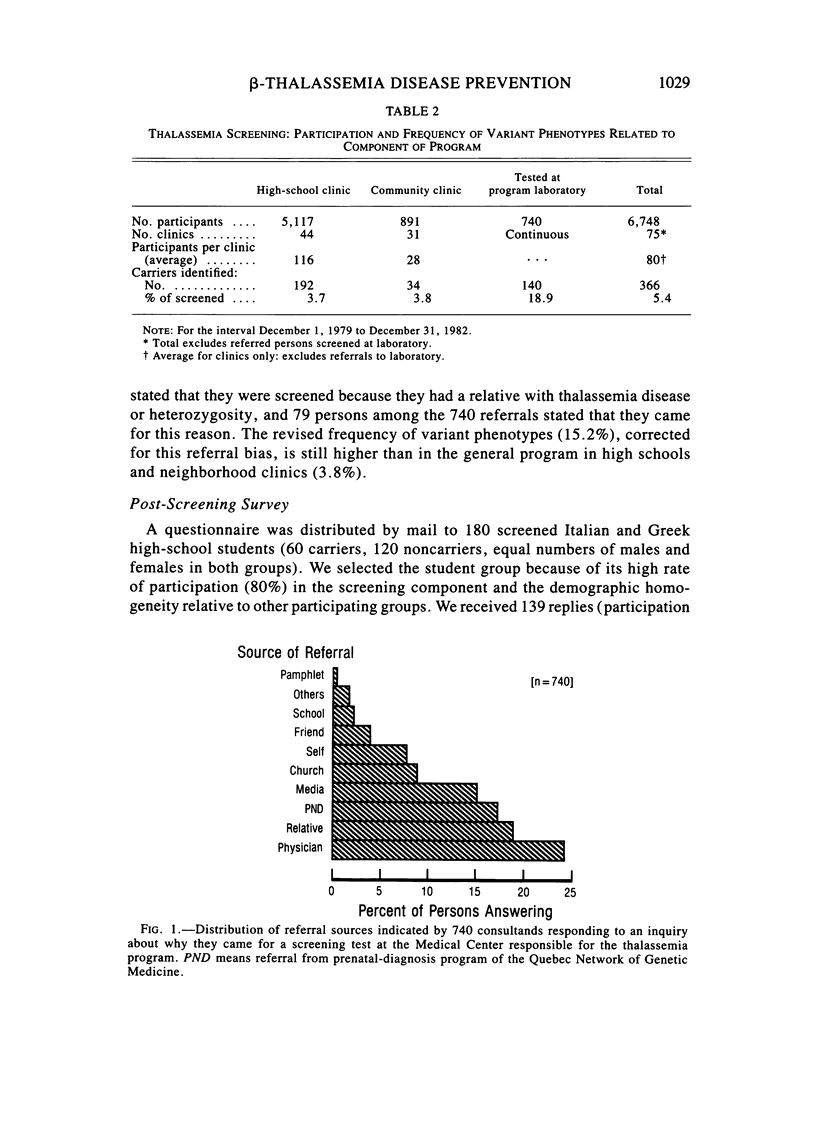
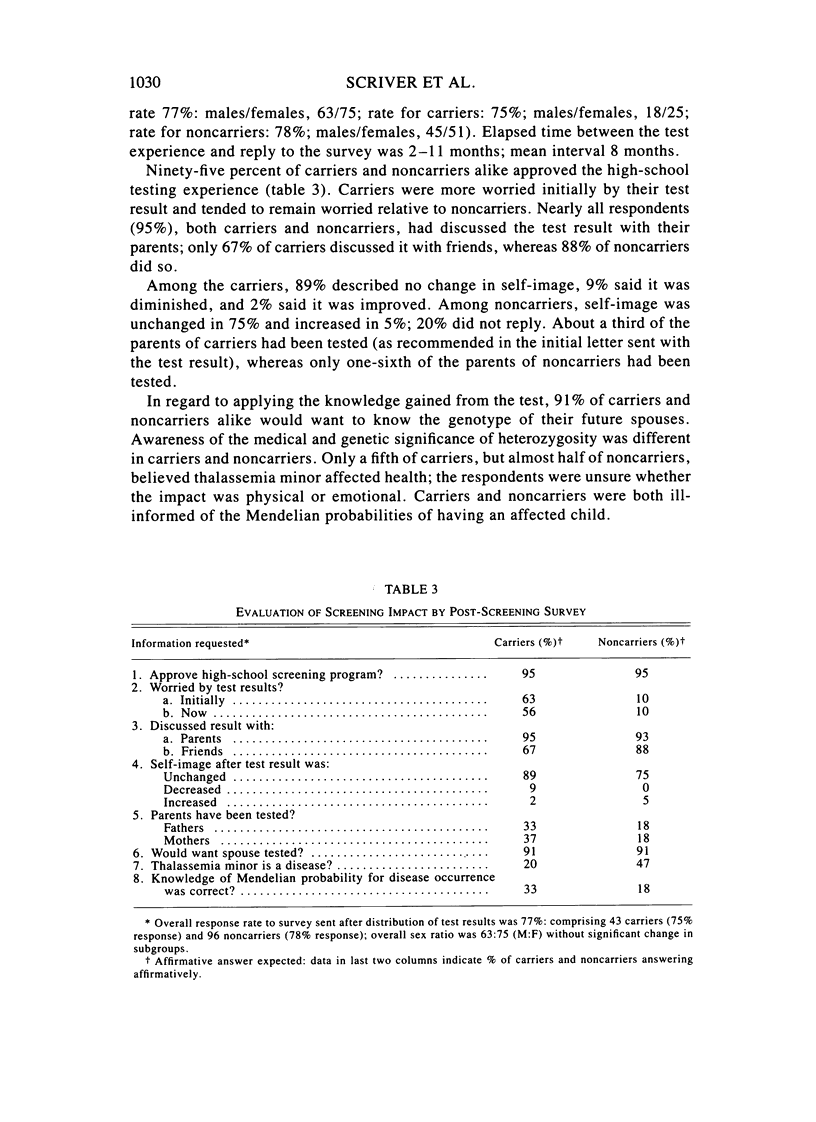
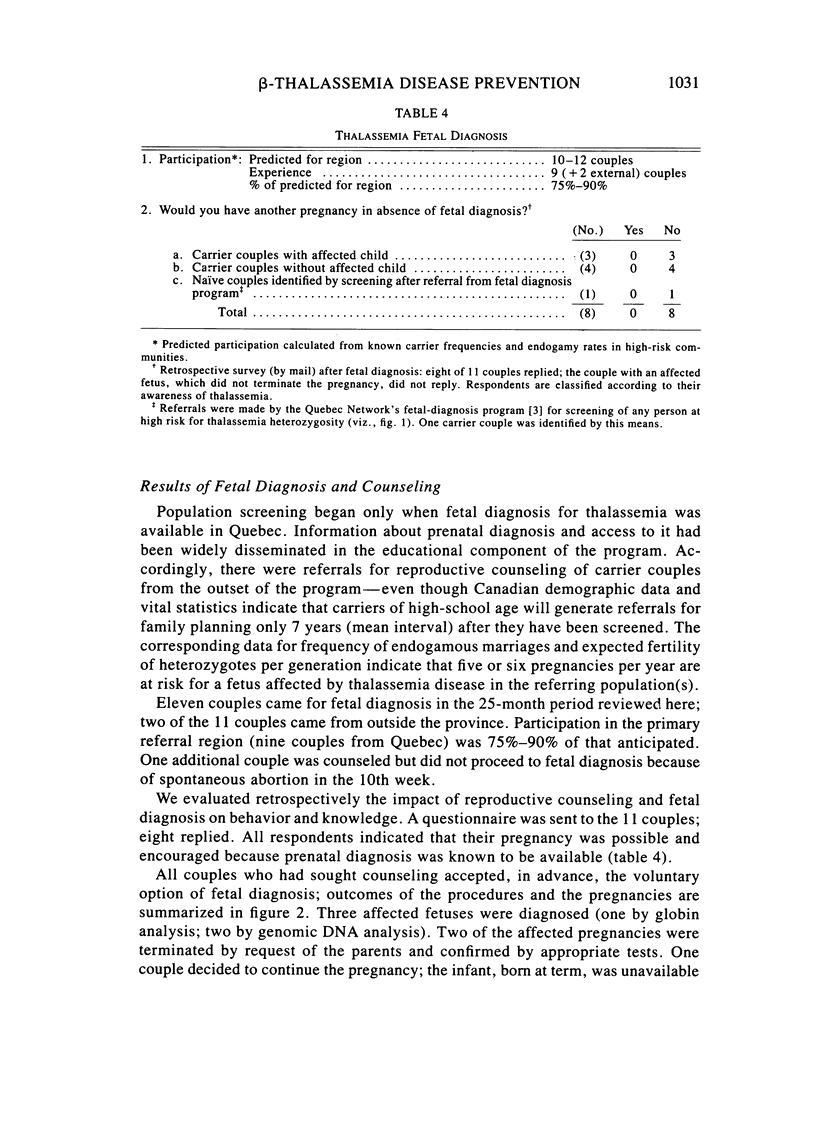
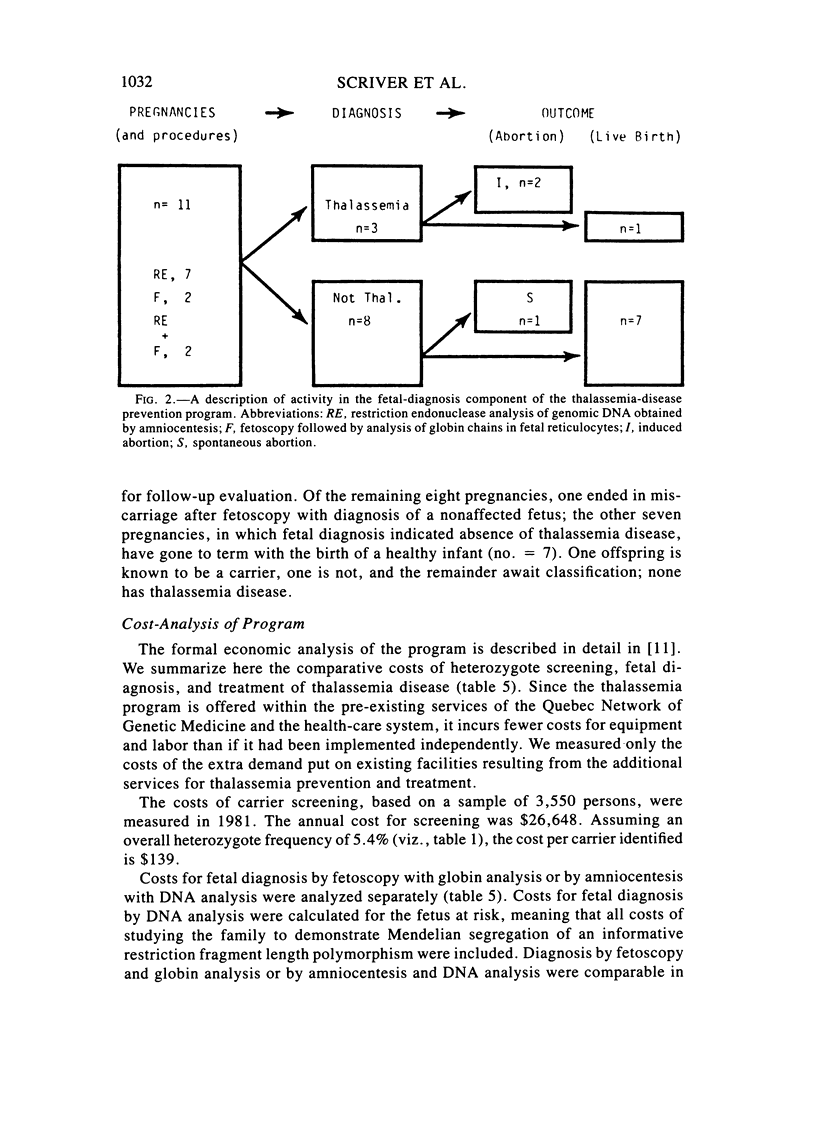
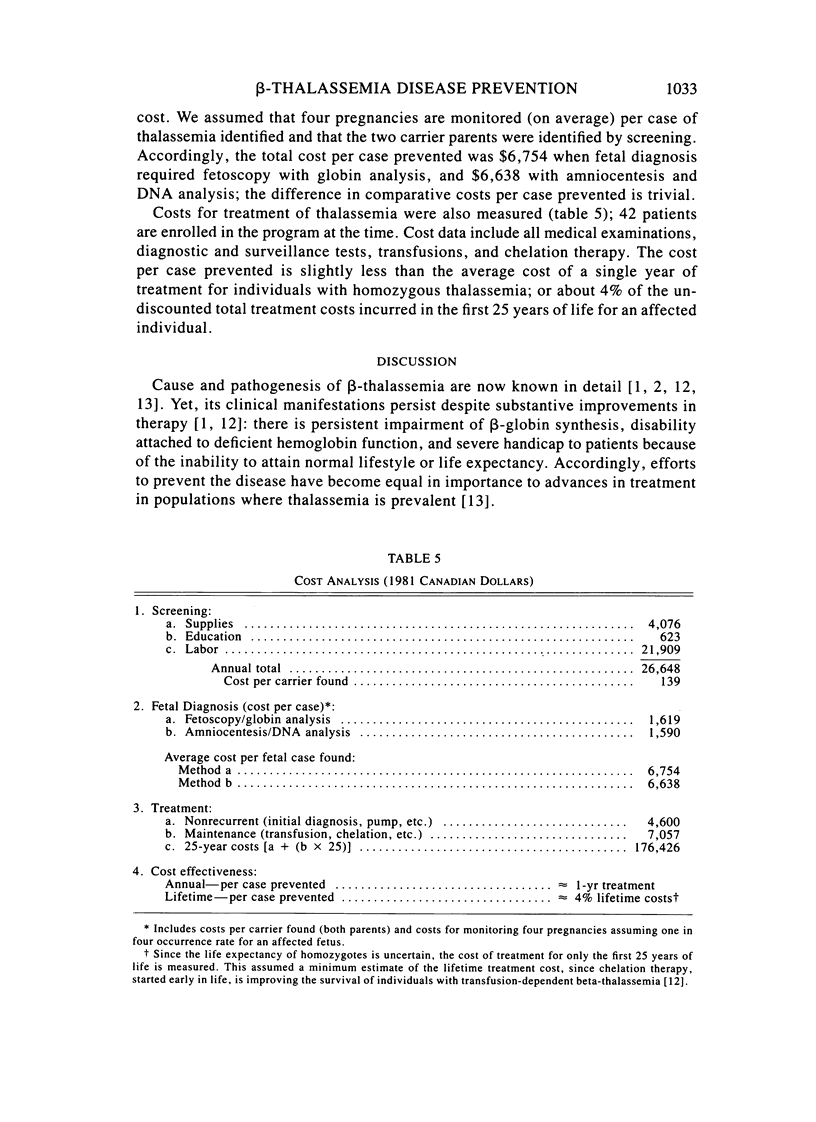
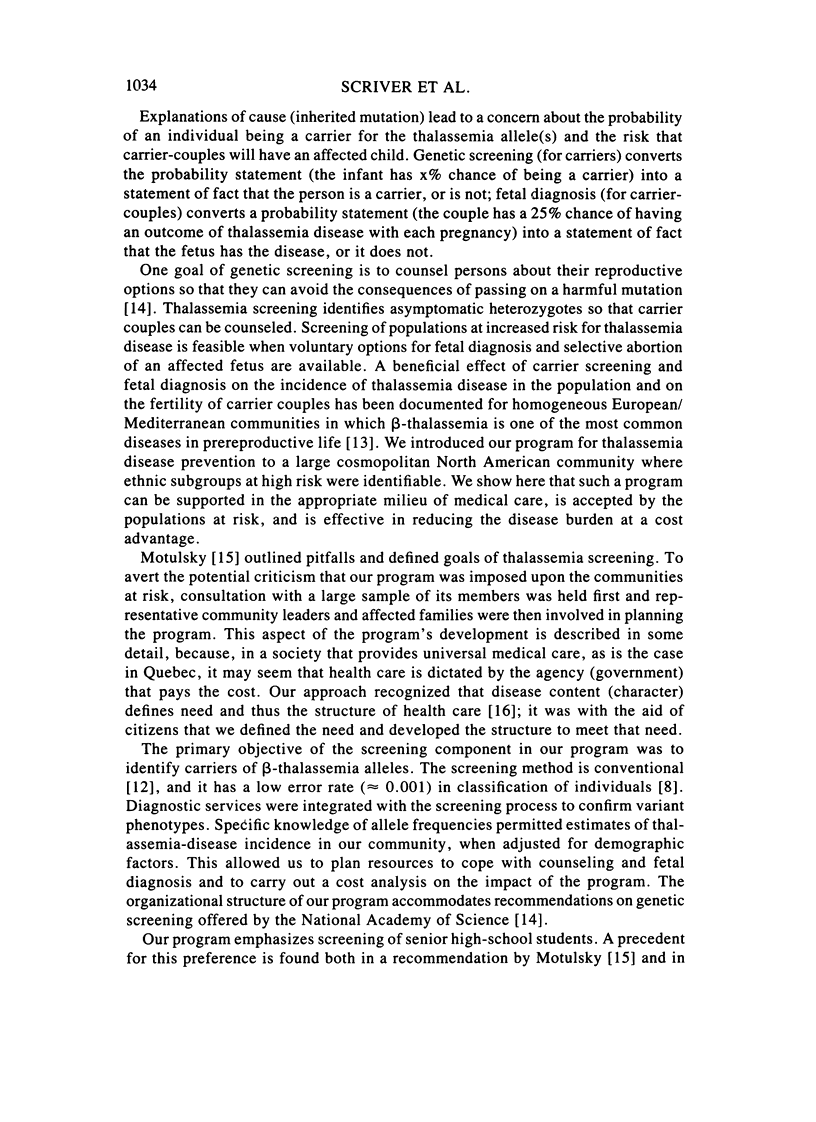
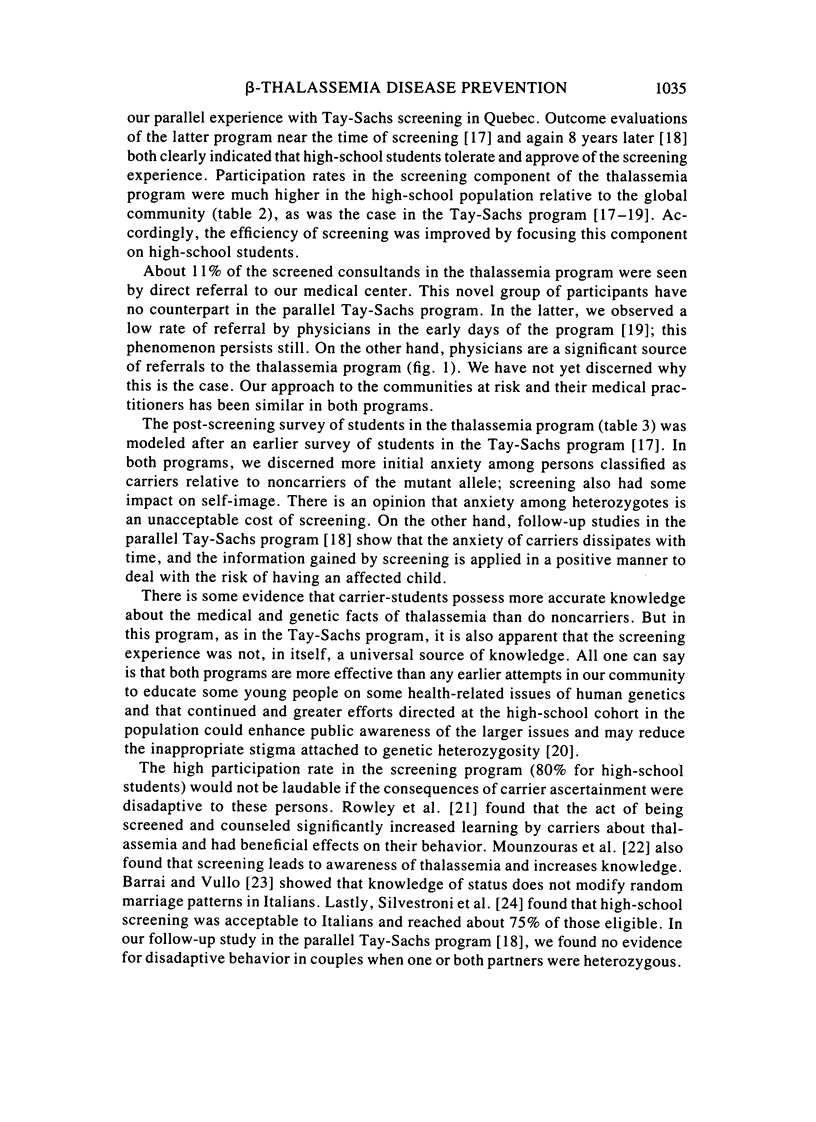
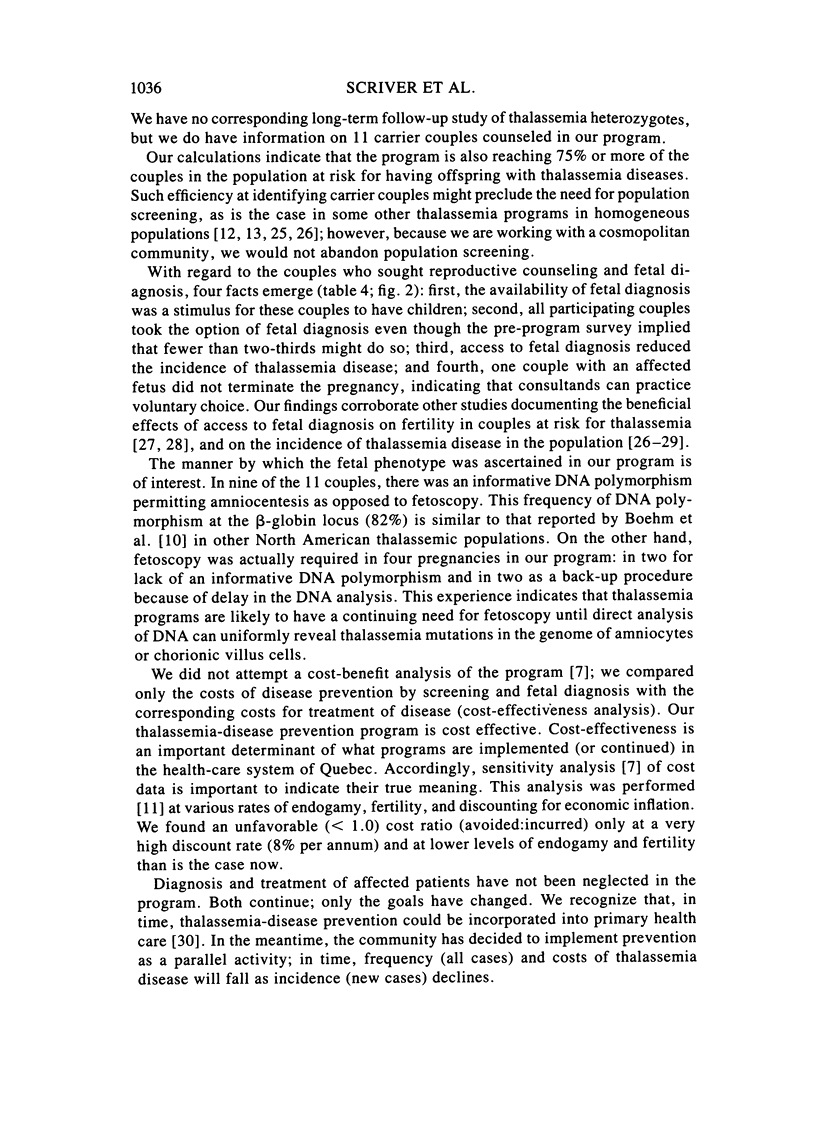
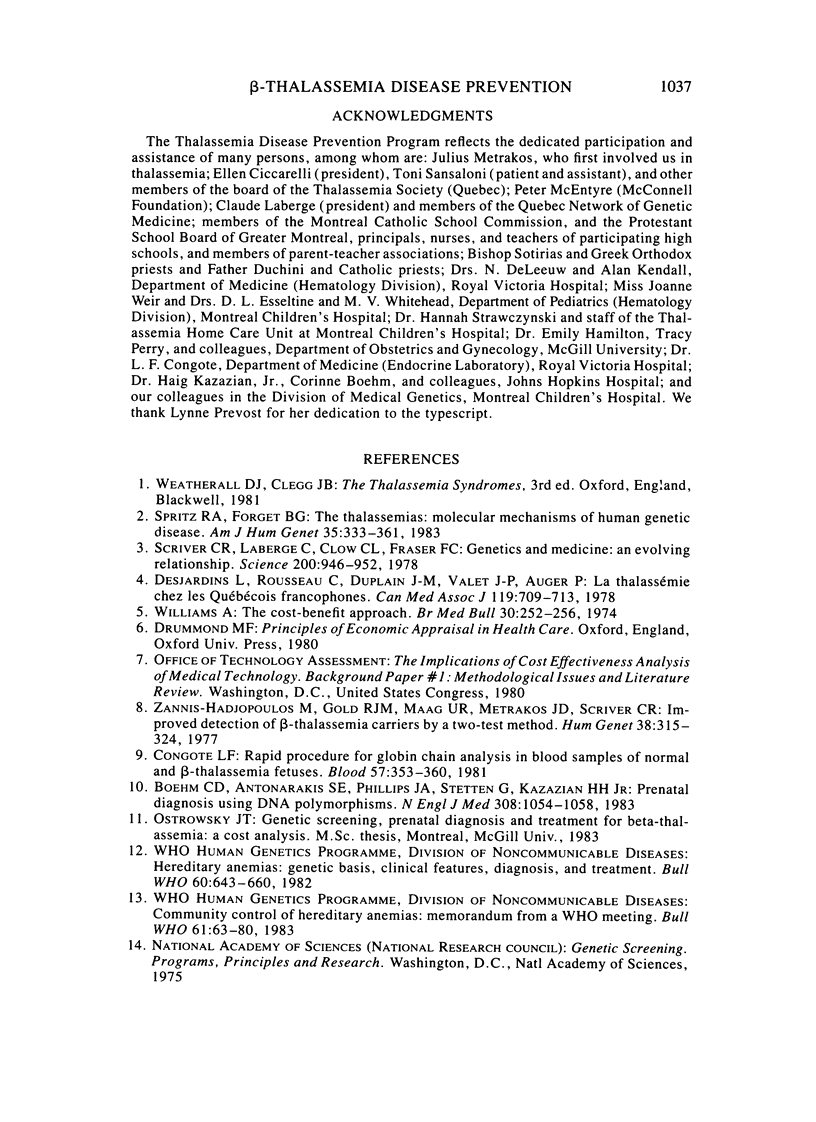
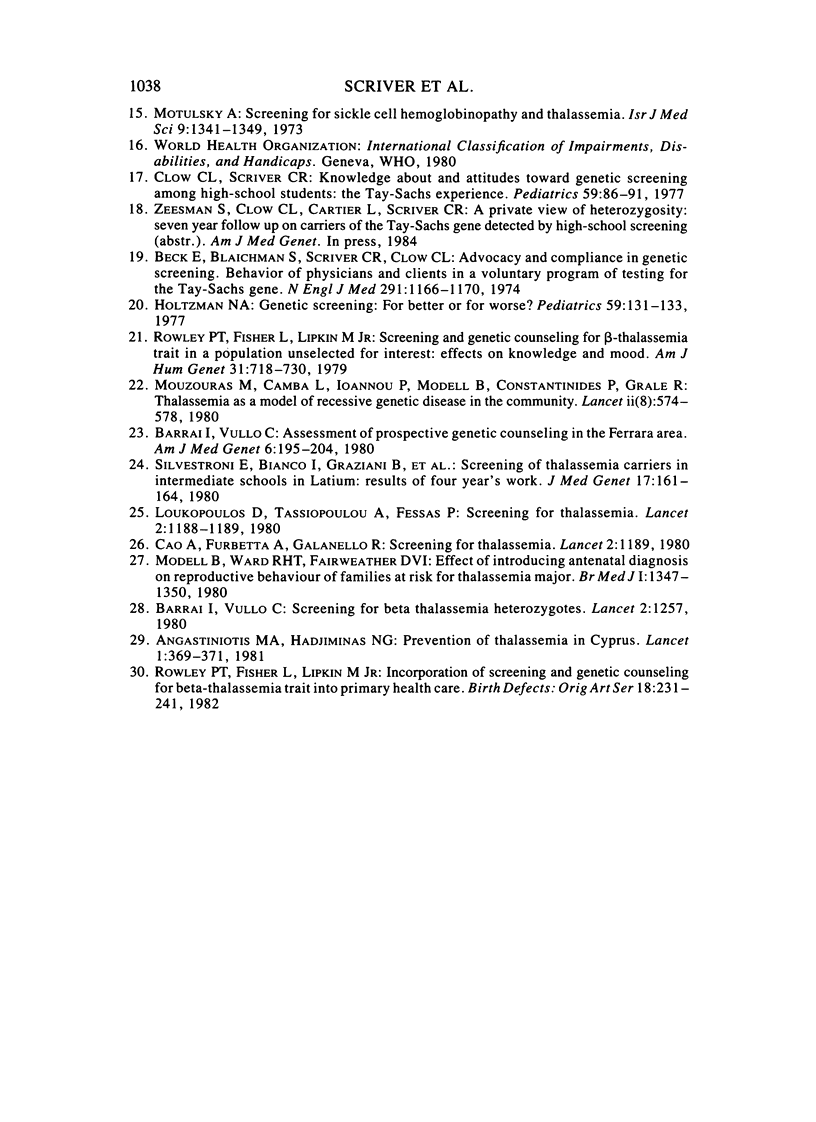
Selected References
These references are in PubMed. This may not be the complete list of references from this article.
- Angastiniotis M. A., Hadjiminas M. G. Prevention of thalassaemia in Cyprus. Lancet. 1981 Feb 14;1(8216):369–371. doi: 10.1016/s0140-6736(81)91682-2. [DOI] [PubMed] [Google Scholar]
- Barrai I., Vullo C. Assessment of prospective genetic counseling in the Ferrara area. Am J Med Genet. 1980;6(3):195–204. doi: 10.1002/ajmg.1320060304. [DOI] [PubMed] [Google Scholar]
- Barrai I., Vullo C. Screening for beta-thalassaemia heterozygotes. Lancet. 1980 Dec 6;2(8206):1257–1257. doi: 10.1016/s0140-6736(80)92529-5. [DOI] [PubMed] [Google Scholar]
- Beck E., Blaichman S., Scriver C. R., Clow C. L. Advocacy and compliance in genetic screening. Behavior of physicians and clients in a voluntary program of testing for the Tay-Sachs gene. N Engl J Med. 1974 Nov 28;291(22):1166–1170. doi: 10.1056/NEJM197411282912206. [DOI] [PubMed] [Google Scholar]
- Boehm C. D., Antonarakis S. E., Phillips J. A., 3rd, Stetten G., Kazazian H. H., Jr Prenatal diagnosis using DNA polymorphisms. Report on 95 pregnancies at risk for sickle-cell disease or beta-thalassemia. N Engl J Med. 1983 May 5;308(18):1054–1058. doi: 10.1056/NEJM198305053081803. [DOI] [PubMed] [Google Scholar]
- Clow C. L., Scriver C. R. Knowledge about and attitudes toward genetic screening among high-school students: the Tay-Sachs experience. Pediatrics. 1977 Jan;59(1):86–90. [PubMed] [Google Scholar]
- Congote L. F. Rapid procedure for globin chain analysis in blood samples of normal and beta-thalassemic fetuses. Blood. 1981 Feb;57(2):353–360. [PubMed] [Google Scholar]
- Desjardins L., Rousseau C., Duplain J. M., Valet J. P., Auger P. La thalassémie chez les Québécois francophones. Can Med Assoc J. 1978 Oct 7;119(7):709–713. [PMC free article] [PubMed] [Google Scholar]
- Holtzman N. A. Genetic screening: for better or for worse. Pediatrics. 1977 Jan;59(1):131–133. [PubMed] [Google Scholar]
- Mannucci P. M. Haemophilia care in developing countries. Lancet. 1980 Nov 29;2(8205):1189–1190. doi: 10.1016/s0140-6736(80)92616-1. [DOI] [PubMed] [Google Scholar]
- Modell B., Ward R. H., Fairweather D. V. Effect of introducing antenatal diagnosis on reproductive behaviour of families at risk for thalassaemia major. Br Med J. 1980 Jun 7;280(6228):1347–1350. doi: 10.1136/bmj.280.6228.1347. [DOI] [PMC free article] [PubMed] [Google Scholar]
- Motulsky A. G. Screening for sickle cell hemoglobinopathy and thalassemia. Isr J Med Sci. 1973 Sep-Oct;9(9):1341–1349. [PubMed] [Google Scholar]
- Mouzouras M., Camba L., Ioannou P., Modell B., Constantinides P., Gale R. Thalassaemia as a model of recessive genetic disease in the community. Lancet. 1980 Sep 13;2(8194):574–578. doi: 10.1016/s0140-6736(80)92003-6. [DOI] [PubMed] [Google Scholar]
- Rowley P. T., Fisher L., Lipkin M., Jr Incorporation of screening and genetic counseling for beta-thalassemia trait into primary health care: effects on knowledge and attitudes. Birth Defects Orig Artic Ser. 1982;18(7):231–241. [PubMed] [Google Scholar]
- Rowley P. T., Fisher L., Lipkin M., Jr Screening and genetic counseling for beta-thalassemia trait in a population unselected for interest: effects on knowledge and mood. Am J Hum Genet. 1979 Nov;31(6):718–730. [PMC free article] [PubMed] [Google Scholar]
- Screening for thalassaemia. Lancet. 1980 Nov 29;2(8205):1188–1189. [PubMed] [Google Scholar]
- Scriver C. R., Laberge C., Clow C. L., Fraser F. C. Genetics and Medicine: an evolving relationship. Science. 1978 May 26;200(4344):946–952. doi: 10.1126/science.644337. [DOI] [PubMed] [Google Scholar]
- Silvestroni E., Bianco I., Graziani B., Carboni C., Valente M., Lerone M., D'Arca S. U. Screening of thalassaemia carriers in intermediate school of Latium: results of four years' work. J Med Genet. 1980 Jun;17(3):161–164. doi: 10.1136/jmg.17.3.161. [DOI] [PMC free article] [PubMed] [Google Scholar]
- Spritz R. A., Forget B. G. The thalassemias: molecular mechanisms of human genetic disease. Am J Hum Genet. 1983 May;35(3):333–361. [PMC free article] [PubMed] [Google Scholar]
- Tammis-Hadjopoulos M., Gold R. J., Maag U. R., Metrakos J. D., Scriver C. R. Improved detection of beta-thalassaemia carriers by a two-test method. Hum Genet. 1977 Oct 14;38(3):315–324. doi: 10.1007/BF00402158. [DOI] [PubMed] [Google Scholar]
- Williams A. The cost-benefit approach. Br Med Bull. 1974 Sep;30(3):252–256. doi: 10.1093/oxfordjournals.bmb.a071211. [DOI] [PubMed] [Google Scholar]


